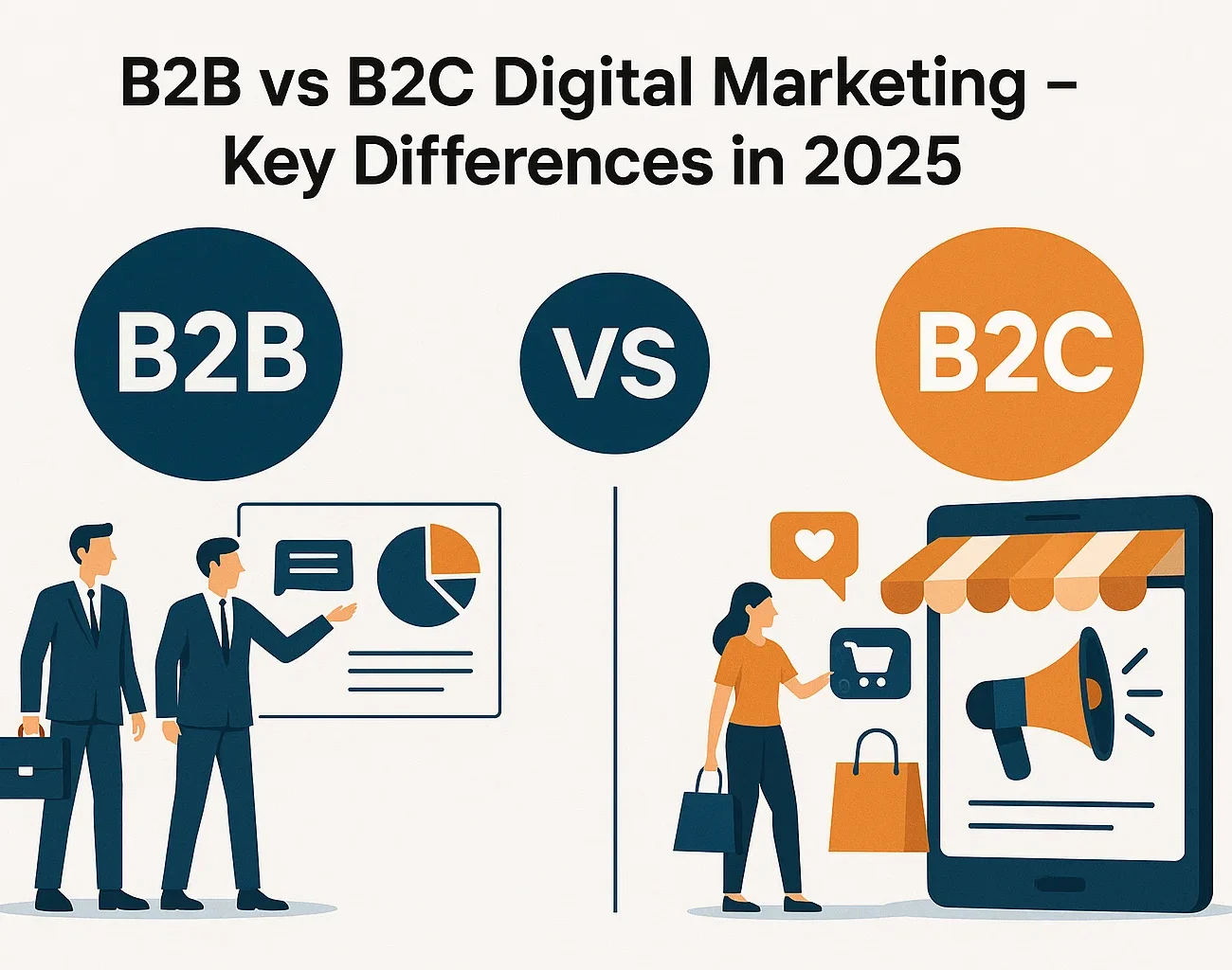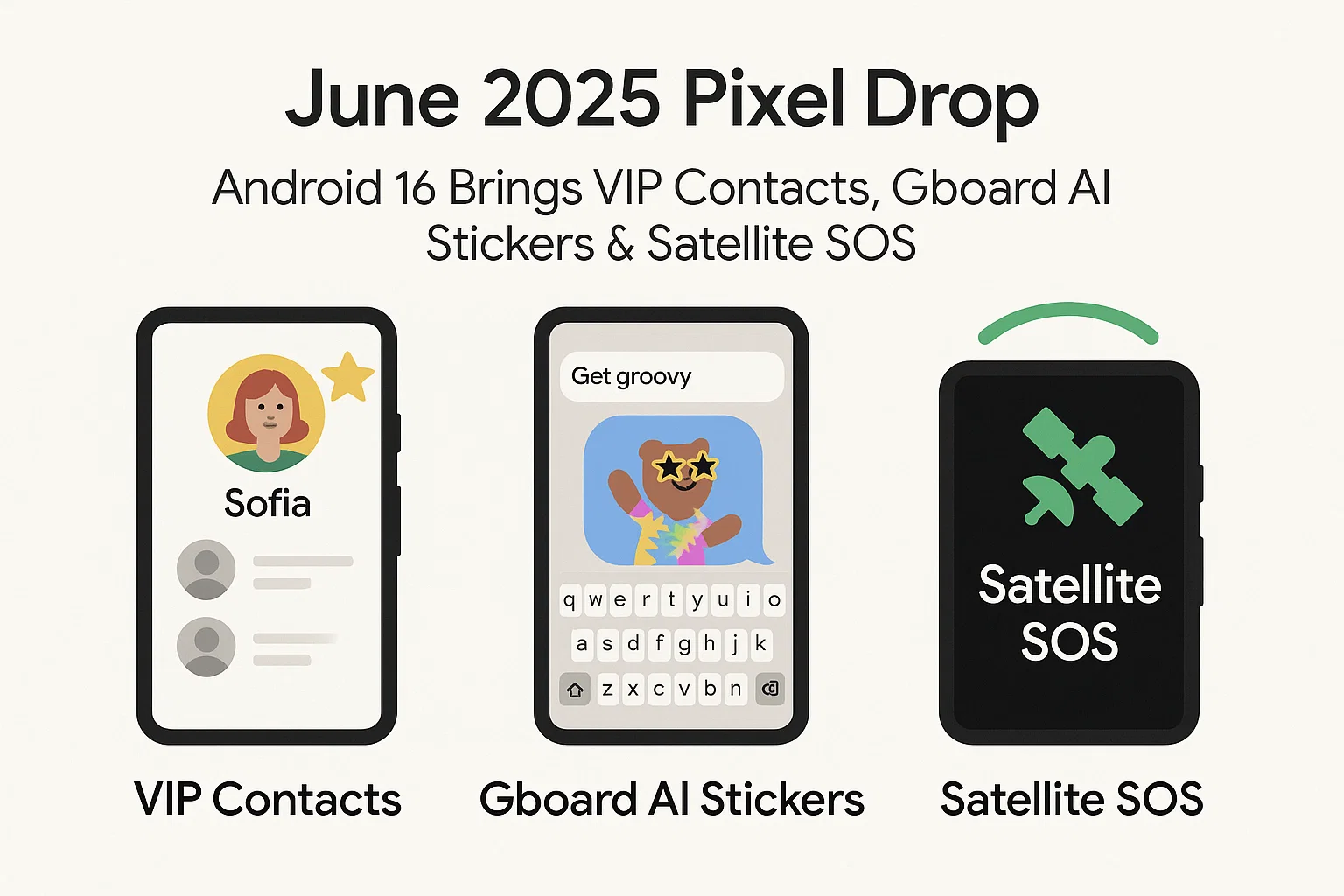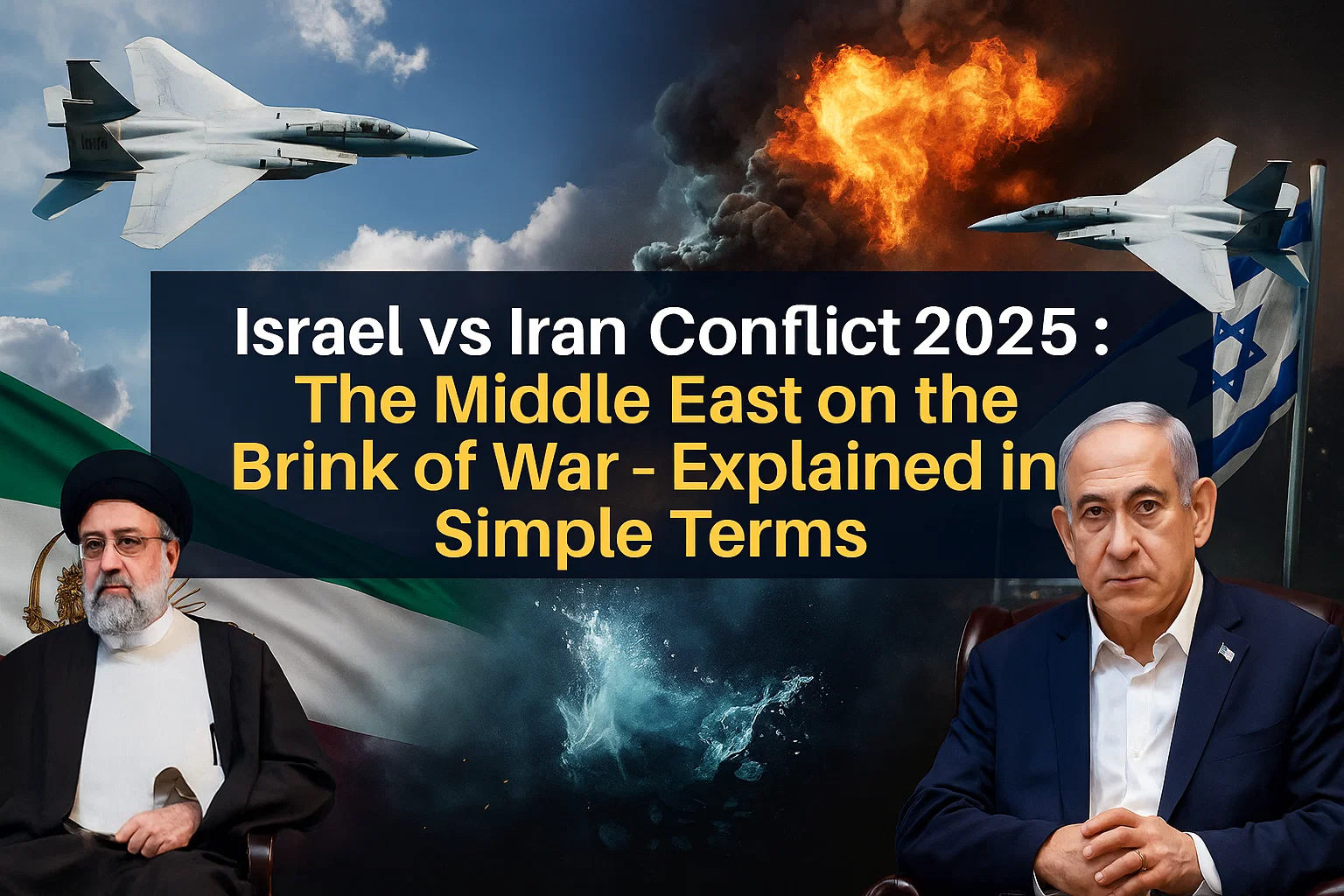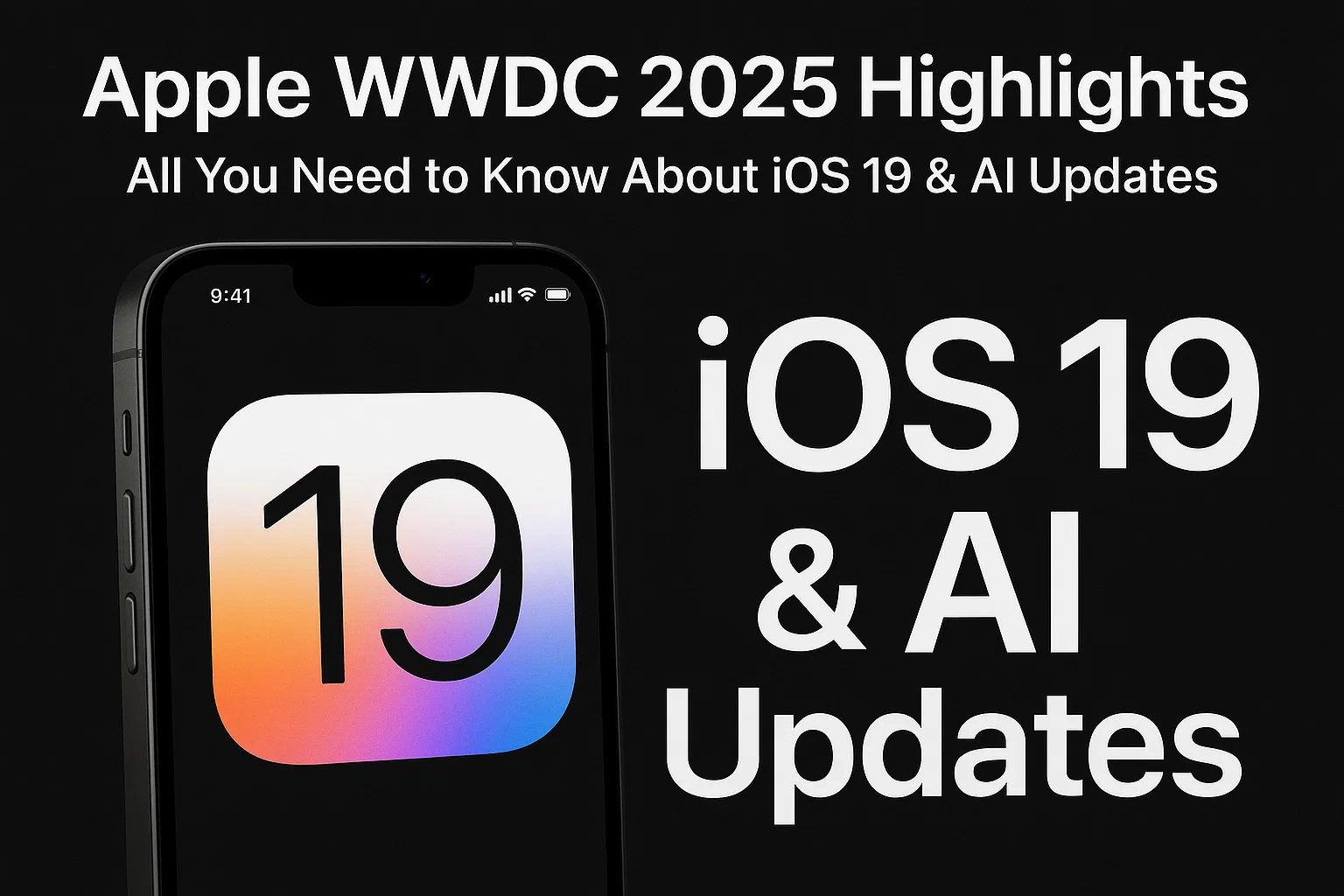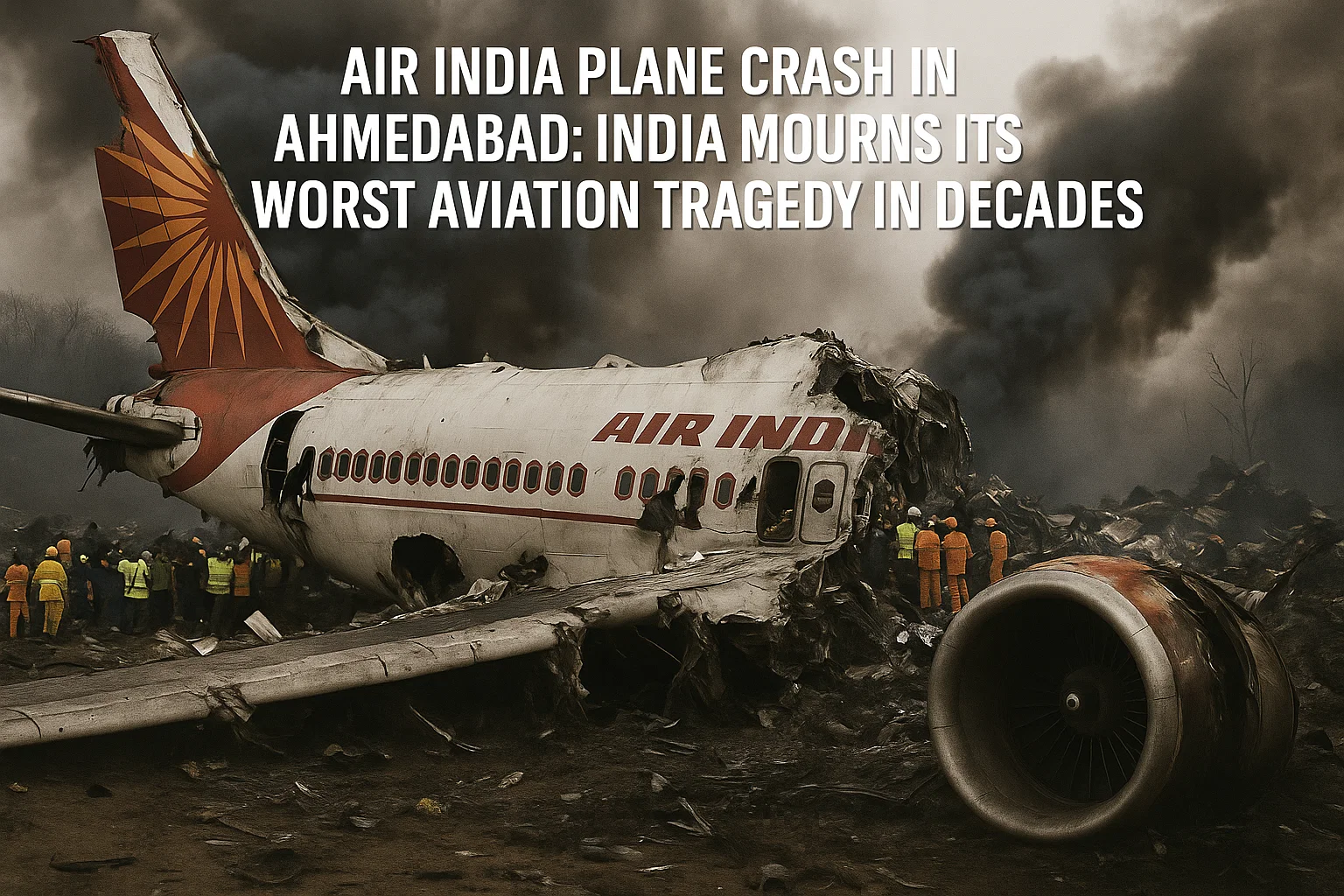As we step deeper into the B2B vs B2C digital-first economy of 2025, Indian businesses—whether they cater to other businesses or directly to consumers—are undergoing a massive transformation. The digital marketing strategies that worked even three years ago have evolved significantly, and now, the differences between B2B (Business-to-Business) and B2C (Business-to-Consumer) marketing are sharper, yet more adaptive than ever.
From SaaS startups in Bengaluru to D2C brands in Jaipur, the way we communicate, engage, and convert audiences has become both nuanced and technology-driven. Yet, amidst all the noise, one golden rule remains unchanged: “Know your audience well.” This blog dives deep into the fundamental differences between B2B and B2C digital marketing in India, through the lens of trends, tech, and human behavior in 2025.
Understanding the Core of B2B and B2C Marketing
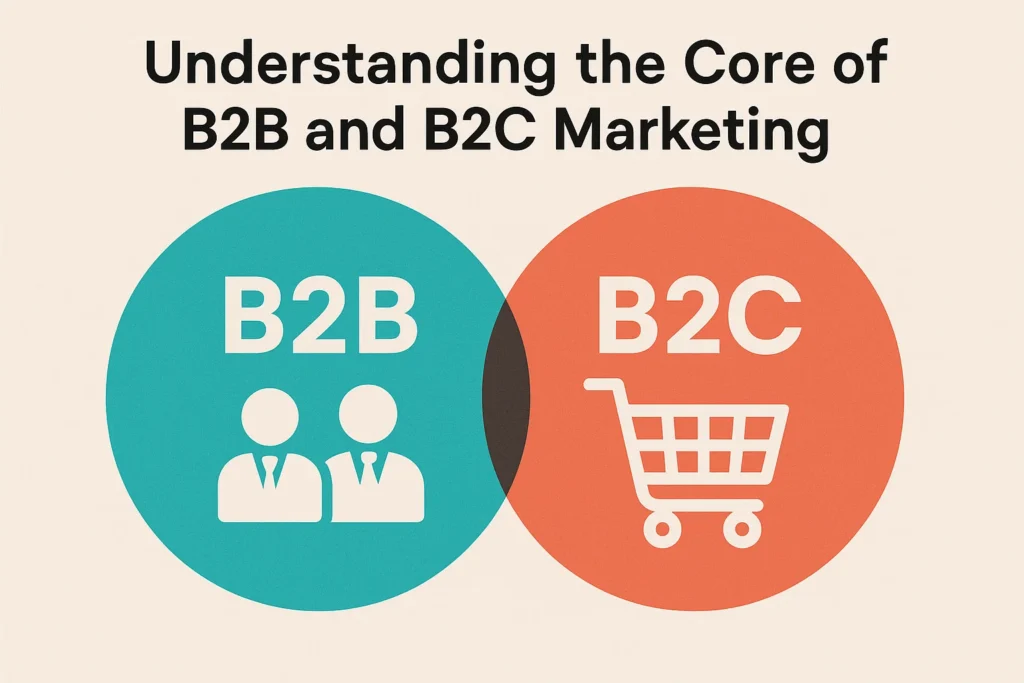
The simplest difference lies in the audience. B2B brands are selling to decision-makers of other companies—think software, consultancy, logistics, or enterprise services. These buyers prioritize ROI, long-term impact, and problem-solving efficiency. On the other hand, B2C marketing is aimed at the everyday consumer—like someone buying organic skincare, a smartphone, or even a packet of masala. Their decisions are driven by emotional satisfaction, peer influence, and convenience.
While both target “humans,” the context in which those humans make decisions is different. A CEO approving a new automation tool thinks differently from a college student ordering a ₹799 hoodie online during a Myntra sale.
The Indian Digital Boom in 2025
India surpassing 900 million internet users, the surge in digital activity from tier-2 and tier-3 cities is significantly fueling the online economy. In this evolving landscape, understanding the differences between B2B and B2C digital marketing in 2025 is more important than ever.. With UPI becoming the default payment method and smartphone penetration exceeding 80%, every brand—big or small—has no choice but to be digital.
In this environment, B2B brands are not limited to boardrooms anymore. They use webinars, blogs, and LinkedIn to position themselves. Meanwhile, B2C brands are all about reels, influencer shout-outs, and festive sales. But beneath these surface-level tactics lies a rich world of strategic difference.
The Emotional vs. Rational Decision-Making Split
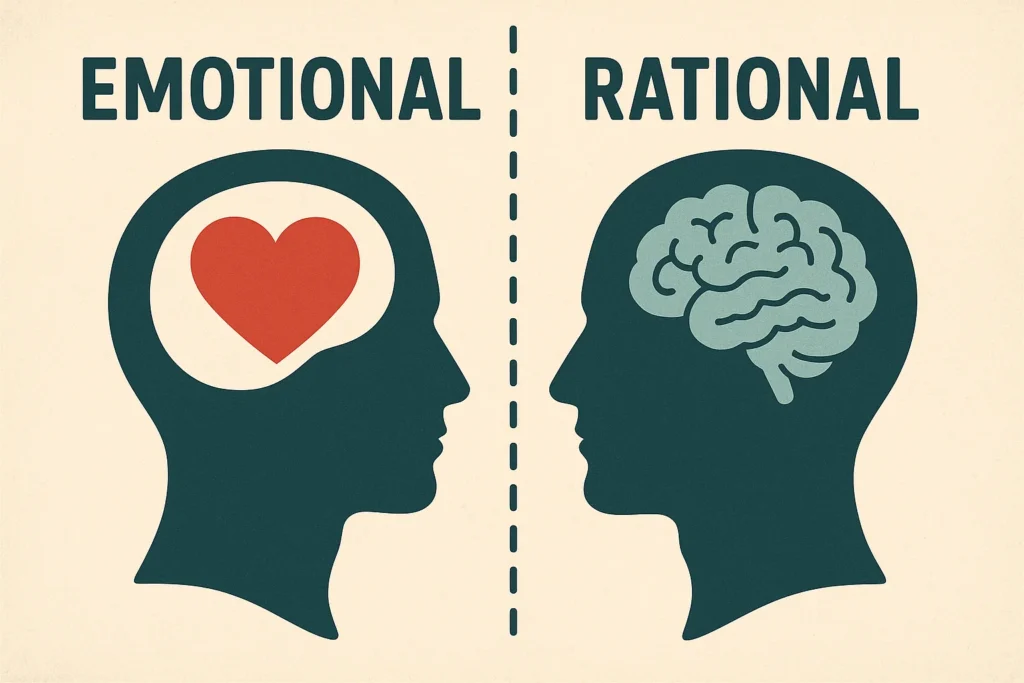
This is perhaps the most crucial difference. B2C consumers are emotional buyers. They buy what feels right, what looks good, what their favorite influencer wears, or what’s trending. B2C digital campaigns often use humor, nostalgia, drama, or urgency. Flash sales, “Only 2 items left,” or “Buy One Get One Free” trigger fast decisions.
Conversely, B2B buyers are rational thinkers. They conduct research, compare vendors, evaluate pricing, request demos, and discuss with teams before making a decision. These decisions often impact the company’s operations, budget, or workforce, so the stakes are high. A ₹10 lakh deal for B2B might take 2 months to close, whereas a ₹5000 B2C purchase might happen in 10 minutes.
In India, where trust plays a vital role, B2B buyers want credibility through case studies, testimonials, and expertise. In B2C, the same trust is built via reviews, influencer content, and peer recommendations.
India has crossed over 900 million internet users, and tier-2 and tier-3 cities are now powering a large part of the online economy.
How the Buying Journey Differs in 2025
The typical B2B buying journey in India now includes multiple stakeholders—think founders, managers, IT heads, and finance teams.They want to understand the ‘how’ and the ‘why’ of the product or service.
This journey is long and slow. It’s not unusual for B2B marketers to send out email newsletters for months, follow up via LinkedIn, conduct virtual product walkthroughs, and still not close a deal for another quarter.
On the flip side, B2C marketing is fast, impulsive, and often mobile-first. The average Indian consumer spends hours on Instagram, YouTube Shorts, or Amazon’s “Today’s Deals” page. The journey from discovery to purchase is short. If they like the ad and the price feels right, they’re buying.
Festivals like Diwali, Holi, and Independence Day play a huge role in B2C buying behavior. B2B, on the other hand, tends to slow down during such periods.
Content That Converts: Serious vs. Snappy
In 2025, content is still king—but the type of content that rules differs drastically between B2B and B2C.
For B2B brands in India, thought leadership is gold. They write long-form blogs, detailed case studies, publish eBooks, and host webinars with industry experts. Their messaging focuses on long-term results, measurable growth, and strategic impact. The tone is formal, authoritative, and educative.
B2C content, however, is all about being relatable, trendy, and emotionally sticky. Product videos, memes, short reels, unboxing experiences, and influencer collaborations dominate the space. The tone is friendly, witty, and vibrant.
Take, for instance, Zoho’s content strategy—they regularly post articles like “Top 5 Tools for Scaling Indian SMEs.” Compare that with a beauty brand like Sugar Cosmetics, which posts reels like “5 Lipsticks That Are Perfect for Shaadi Season.”
Where They Market: Platform Priorities
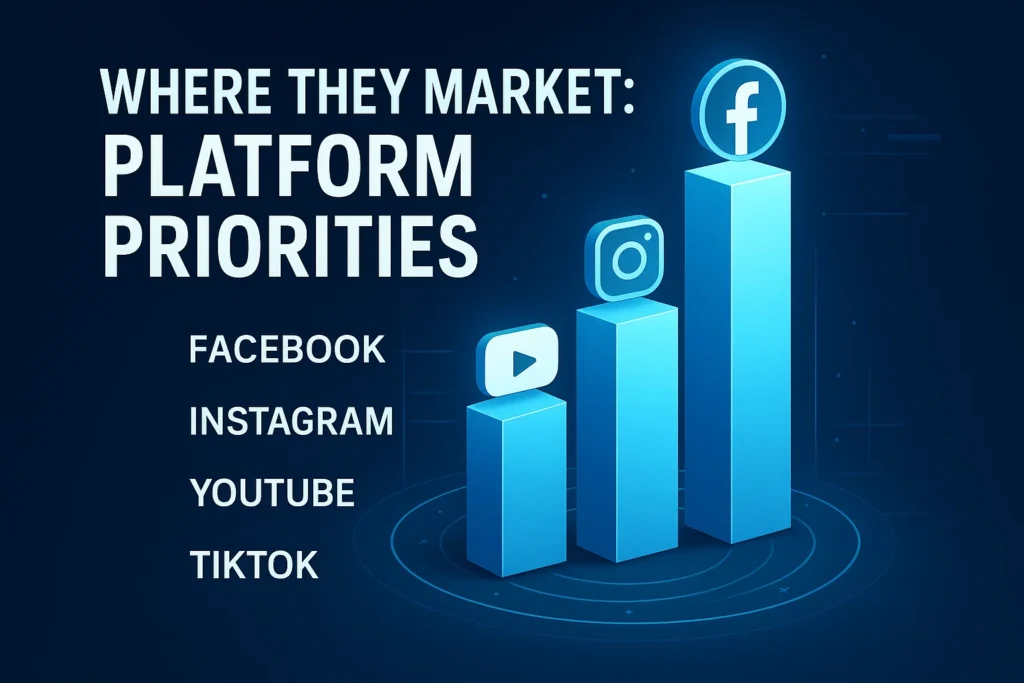
While there’s some overlap in platforms, each sector uses them very differently.
B2B brands dominate on LinkedIn. It’s the platform where decision-makers hang out, where knowledge-sharing happens, and where company updates are taken seriously. Email marketing is another strong pillar for B2B—especially when combined with CRM tools like Zoho or HubSpot for automation.
You’ll also find B2B brands leveraging webinars, industry podcasts, and long-form YouTube videos for product walkthroughs.
B2C brands, however, are deeply invested in Instagram, YouTube Shorts, and WhatsApp. They know where the attention is. Reels are the new billboards, influencers are the new celebrities, and product reviews are more valuable than prime-time TV ads.
In India, the WhatsApp Business API has become a lifeline for both B2B and B2C, but for very different purposes. B2B uses it for lead follow-ups, quote approvals, and client onboarding. B2C uses it for cart reminders, delivery updates, and festive offers.
The Role of SEO and Search Trends
B2B SEO focuses on long-tail keywords that solve specific problems. Phrases like “best CRM software for Indian startups” or “top logistics automation tools for eCommerce” are common. These queries show buyer intent, and B2B blogs are written to attract such readers. Ranking on Google can bring in hundreds of warm leads each month.
For B2C, SEO is more driven by trends, seasonality, and product categories. People search for “best kurti under ₹500,” “monsoon skincare for oily skin,” or “budget travel gadgets.” B2C SEO also relies heavily on visual platforms like YouTube and Google Shopping.
Voice search and regional-language SEO are exploding in India. Brands that create content in Hindi, Tamil, Marathi, or Telugu are seeing tremendous gains, especially in tier-2 and tier-3 cities. B2C is currently winning this game.
Pricing Transparency and Offers
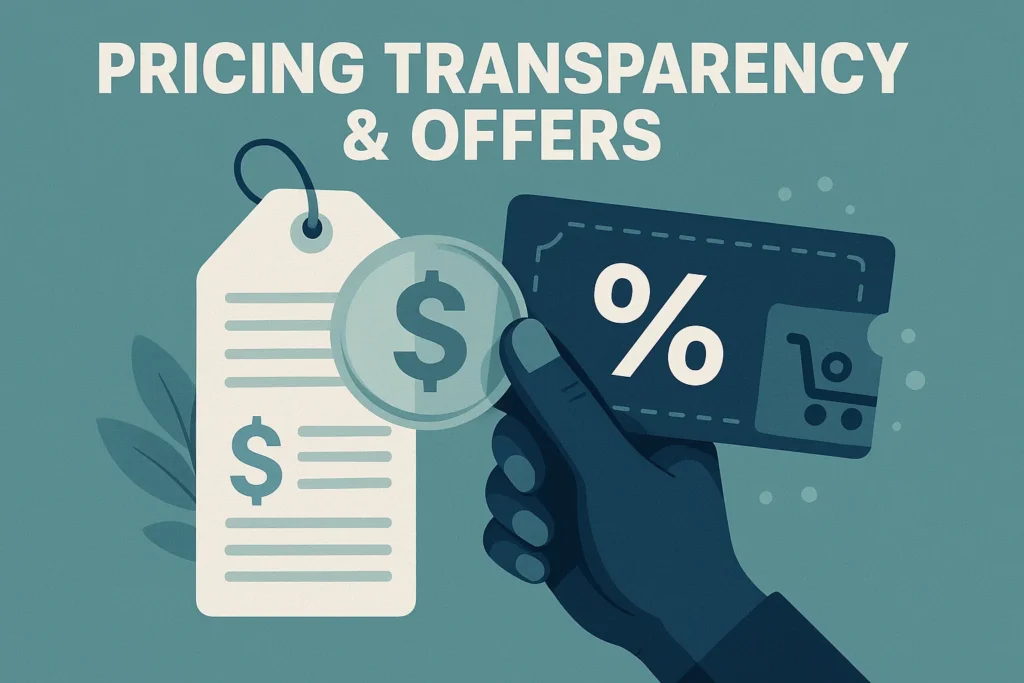
B2C customers demand clear pricing. They expect discounts, bundles, limited-time offers, and free shipping. A big part of B2C digital marketing in India revolves around pricing triggers. Amazon, Flipkart, and D2C brands often design entire campaigns around flash sales or price drops.
B2B pricing, however, is rarely public. It involves custom quotes, enterprise plans, and often negotiation. The emphasis is not on being cheap, but on being valuable. B2B buyers want ROI calculations, not discount banners.
This creates a fundamental marketing difference. B2C marketers focus on price sensitivity. B2B marketers focus on value articulation.
AI, Automation, and Personalization in 2025
Both B2B and B2C have embraced automation in India, but with different goals.
B2B brands use AI to qualify leads, score prospects, automate email sequences, and analyze user behavior. Tools like ChatGPT, Salesforce Einstein, and Zoho CRM’s AI assistant help generate proposals, schedule calls, and track pipeline health.
B2C brands use AI more for customer experience. They personalize product recommendations, use chatbots for support, send behavior-based WhatsApp messages, and create dynamic pricing offers.
In both sectors, AI-generated video content (using tools like Microsoft Sora) is on the rise. But the tone and use cases differ—B2B might use it to explain a new compliance update, while B2C might use it to promote a new Holi product line.
Trust-Building and Social Proof
B2B marketers earn trust through client logos, case studies, media mentions, ISO certifications, and founder-led thought pieces. A clean and professional website is also crucial.
B2C marketers build trust via customer reviews, influencer partnerships, YouTube testimonials, and user-generated content. Platforms like Instagram now allow you to pin reviews or use “story highlights” to showcase happy customers.
In India, especially in smaller cities, word of mouth still reigns supreme. B2C brands must ensure their first 100 customers become brand evangelists. B2B brands must deliver quality to their first few clients, as referrals carry immense weight.
Cultural & Festive Context in India
In India, culture drives consumption. For B2C brands, festive times like Diwali, Eid, Navratri, and Valentine’s Day are massive sales opportunities. Campaigns are filled with regional flavor, family values, and emotion.
For B2B brands, the calendar works differently. The Indian financial year (April to March) drives budgeting cycles. Many businesses finalize deals in Q4 or Q1. Festivals are downtime for B2B—not marketing peaks.
Understanding this cultural duality is essential. What works for one won’t necessarily work for the other.
Blending Approaches, But Staying Purposeful
In India’s rapidly evolving digital space, the line between B2B and B2C marketing is no longer as rigid as it once was. We’re seeing B2B marketers embrace storytelling, emotional resonance, and creative content that used to be the domain of B2C. At the same time, B2C brands are getting smarter—leveraging CRM systems, data analytics, and automation, much like their B2B counterparts.
This overlap is leading to exciting innovations, but it doesn’t erase the foundational differences between the two. The audience type, the logic behind purchase decisions, the pace of conversion, and the content preferences are still distinctly unique in both worlds.
For Indian marketers, entrepreneurs, and agencies, the key is clarity. Understand who your customer is, how they think, and what drives their decisions. Build your strategies around those insights. Pick the right platforms, craft the right message, and use tools that support your specific goals.
Only then will your digital marketing truly connect with your audience—whether you’re speaking to a business or an individual. learn more with Zealimpact

